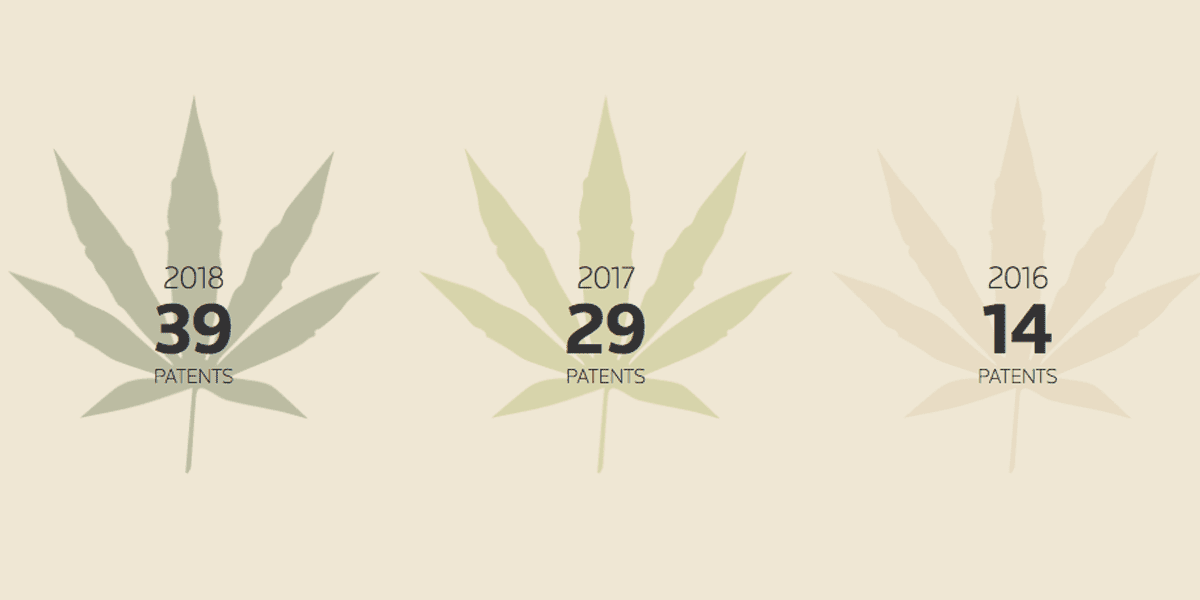https://www.uspto.gov/patents-getting-started/general-information-concerning-patents#heading-31
Plant Patents
The law also provides for the granting of a patent to anyone who has invented or discovered and asexually reproduced any distinct and new variety of plant, including cultivated sports, mutants, hybrids, and newly found seedlings, other than a tuber-propagated plant or a plant found in an uncultivated state.
Asexually propagated plants are those that are reproduced by means other than from seeds, such as by the rooting of cuttings, by layering, budding, grafting, inarching, etc.
With reference to tuber-propagated plants, for which a plant patent cannot be obtained, the term “tuber” is used in its narrow horticultural sense as meaning a short, thickened portion of an underground branch. Such plants covered by the term “tuber-propagated” are the Irish potato and the Jerusalem artichoke.
An application for a plant patent consists of the same parts as other applications. The term of a plant patent shall be 20 years from the date on which the application for the patent was filed in the United States or, if the application contains a specific reference to an earlier filed application under 35 U.S.C. 120, 121 or 365(c), from the date the earliest such application was filed.
The specification should include a complete detailed description of the plant and the characteristics thereof that distinguish the same over related known varieties, and its antecedents, expressed in botanical terms in the general form followed in standard botanical text books or publications dealing with the varieties of the kind of plant involved (evergreen tree, dahlia plant, rose plant, apple tree, etc.), rather than a mere broad non-botanical characterization such as commonly found in nursery or seed catalogs. The specification should also include the origin or parentage of the plant variety sought to be patented and must particularly point out where and in what manner the variety of plant has been asexually reproduced. The Latin name of the genus and species of the plant should be stated. Where color is a distinctive feature of the plant, the color should be positively identified in the specification by reference to a designated color as given by a recognized color dictionary. Where the plant variety originated as a newly found seedling, the specification must fully describe the conditions (cultivation, environment, etc.) under which the seedling was found growing to establish that it was not found in an uncultivated state.
A plant patent is granted on the entire plant. It therefore follows that only one claim is necessary and only one is permitted.
The oath or declaration required of the applicant in addition to the statements required for other applications must include the statement that the applicant has asexually reproduced the new plant variety. If the plant is a newly found plant, the oath or declaration must also state that the plant was found in a cultivated area.
Plant patent drawings are not mechanical drawings and should be artistically and competently executed. The drawing must disclose all the distinctive characteristics of the plant capable of visual representation. When color is a distinguishing characteristic of the new variety, the drawing must be in color. Two duplicate copies of color drawings must be submitted. All color drawings should include a one-inch margin at the top for Office markings when the patent is printed.
Specimens of the plant variety, its flower or fruit, should not be submitted unless specifically called for by the examiner.
The filing fee on each plant application and the issue fee can be found in the fee schedule. For a qualifying small entity most fees are reduced by half. 35 U.S.C. 41(h)(1). Plant patent applications may be published pursuant to Title 35, United States Code, Section 122(b), but the publication fee is not reduced for small entities.
A plant patent application is the only type of patent application filed at the USPTO which is not permitted to be filed via EFS-Web.
All inquiries relating to plant patents and pending plant patent applications should be directed to the United States Patent and Trademark Office and not to the Department of Agriculture.
The Plant Variety Protection Act (Public Law 91577), approved December 24, 1970, provides for a system of protection for sexually reproduced varieties, for which protection was not previously provided, under the administration of a Plant Variety Protection Office within the Department of Agriculture. Requests for information regarding the protection of sexually reproduced varieties should be addressed to Commissioner, Plant Variety Protection Office, Agricultural Marketing Service, National Agricultural Library Bldg., Room 0, 10301 Baltimore Blvd., Beltsville, MD, 20705-2351.
It seems you can patent a clone but not a seed line
Edit: Seems that is wrong
https://en.wikipedia.org/wiki/Plant_Variety_Protection_Act_of_1970
Plant Variety Protection Act of 1970
Basic provisions
The PVPA confers a limited period of legal control to breeders of sexually reproduced or
tuber propagated plant varieties. In order to be eligible for a certificate under the PVPA, a plant variety must satisfy four requirements.
- First, it must be new, in the sense that propagating or harvested material has not been sold or otherwise disposed of for purposes of exploitation for more than one year in the United States, or more than four years in any foreign jurisdiction (or six years in the case of a tree or vine).
- Second, the variety must be distinct—that is, clearly distinguishable from any other publicly known variety. Distinctness may be based on one or more identifiable morphological, physiological, or other characteristics, including commercially valuable characteristics affecting activities such as milling and baking (in the case of wheat).
- Third, the variety must be uniform, in the sense that any variations are describable, predictable, and commercially acceptable.
- Finally, the variety must be stable, in the sense that the variety, when reproduced, will remain unchanged with regard to its essential and distinctive characteristics within a reasonable degree of commercial reliability.
A plant variety certificate gives the breeder the right to exclude others from selling the variety, or offering it for sale, or reproducing it, or importing it, or exporting it, or using it in producing (as distinguished from developing) a
hybrid or different variety. The term of protection runs 20 years from the certificate's date of issue, or 25 years in the case of a tree or vine.
I remember hearing DJ Short was trying to go through this for a couple of years. No idea whatever happened with it.







